
The Scarpa Phantom Guides are part of a new generation of multi-layer boots. Building on the design of its predecessors the Freney XT and the Cumbre, Scarpa have created a boot that is light, warm and precise. This has been achieved by combining a non-removable inner boot within a fixed gaiter. Like a plastic boot, only without the plastic (and the pressure sores/blisters).
As a result the Phantom Guides are suitable for a uniquely wide range of activities: Scottish and Alpine Winter, Alpine Summer, Continental Ice, and probably a few other styles of climbing I haven't even heard of yet. Don't be mistaken into thinking that these are only for the elite just because they look different. If you are looking for the ultimate all-rounder then look no further.
Comfort and support are provided by the joint efforts of a PU Sole Unit and TPU midsole. At 1800g per pair they feel exceptionally light, but this low weight has not been at the compromise of functionality. Modern lightweight boots have been guilty of using progressively thinner/lighter tread - not something I am a great fan of - and although these figures make for good stats/ratings it doesn't produce something usable or long lasting.
The Phantom Guide, however, features a Vibram sole that is both grippy and durable, as well as a defined/ in-cut heel (perfect for stomping your way down snow slopes). A smooth, flat edge around the toe-box is perfect for climbing, making even the smallest of edges usable. The sole offers a small amount of flex, which is unusual for a B3 boot. This, alongside the light weight, brings about a performance more akin to the precision and control offered by a technical rock-boot. As well as more comfort on long approaches you experience more sensitivity through your crampons when climbing, which is particularly useful on mixed routes (using C3 crampons would make them fully rigid anyway if needed).
Although I will go into detail on the inner boot in just a second, now seems like the most suitable time talk about the boots' ankle flex. The Phantom Guide has quite a low cut, giving your foot a superb freedom of movement. Personally I have found this to be a benefit on both the approach and the climb, with minimal loss of support. If you have any doubts – try a pair on. If they fit, I can't see you walking away without a pair...
The last
The last is traditionally Scarpa: medium-wide fitting with a high volume. If you have particularly shallow feet it is worth getting them fitted up properly with volume reducers. Although I haven't personally had any issues with heel lift (something that is commonplace amongst rigid boots), I partly attribute this to the time and effort of the Italian design/manufacturing and the Superfeet I have religiously fitted within. I was cynical upon using them for the first time (“how much difference can a bit of plastic make?!”), but I find these make a real difference to the comfort levels by the end of a long day.
Warmth
Warmth is supplied courtesy of the Primaloft lining. I've used Primaloft belay jackets in Scotland for the past few seasons and it is a material I have the utmost faith in. The reasons are two-fold: firstly, it is the nearest warmth I have found in comparison to down, and secondly it keeps you warm even when wet (although I would much prefer to be dry). Through use and abuse I have confidence that the Phantom Guides will keep me warm throughout Scotland and on fast/light Alpine ascents in both summer and winter. On a recent trip to the Alps with UKC Editor Jack Geldard we climbed the 1938 Route on the North Face of the Eiger. I was happy using the Guides in a quick two day push, but if you plan on hanging around in such cold conditions (which I wouldn't particularly recommend!) the Phantom 6000s would be well worth considering.
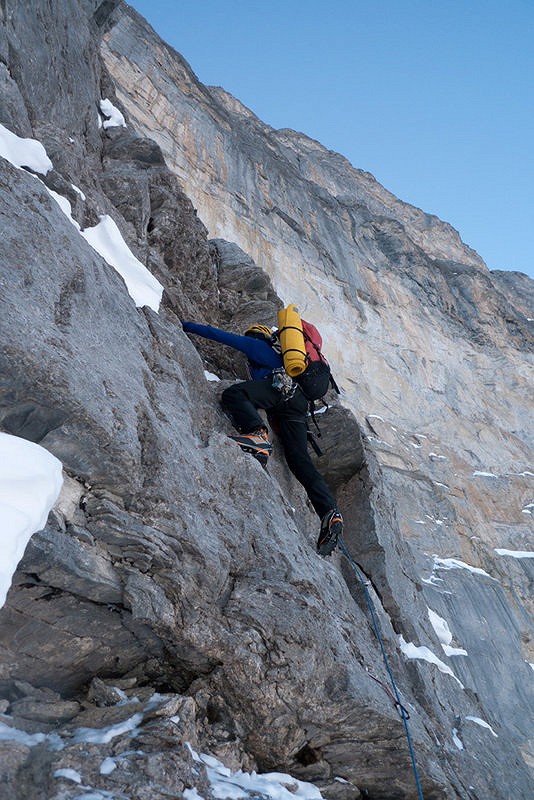
The Fast Lock Lacing System (which I cleverly found out translates to “when you pull the laces, they tighten – fast!!!”) works effectively. I particularly like this feature as lacing was just starting to become a tedious exercise ... Jokes aside: on a typical winter day I lace my boots twice – once at the car and once at the route. No matter how enthralling the lacing experience, laces coming undone can be severely inconvenience and potentially dangerous. Fortunately the combined effect of the Fast Lock system and the grippy Dyneema Laces means that the days of teetering around on 45 degree snow slopes knotting irritating pieces of string are over.
Ed's Note: Don't try to tighten them using the release tab. That's for releasing not tightening, and it will come off if you pull it too hard. The lace lock system will still work, but it'll be more awkward to release your laces wearing gloves.
Moving on we come to the iconic gaiter. Not only does this provide the boots' waterproof layer but it also supplies additional warmth. I have used the Phantom Guides significantly more in Scotland than I have the Alps and I know one thing for sure: if you're going to get wet feet anywhere – it's Scotland. Scottish Winter puts more stress on boots' integrity than anything the Alps can throw at it; the only exception to this is the cold. On those horrible warm/wet days my Phantom Guides have withstood as much water as any Gore-Tex boot I have ever used and dried overnight in a good drying room. The fabric used is Outdry - a new competitor to Gore-Tex. It's a laminate bonded directly to the outer fabric so there is no no scrim or glue needed as in Gore-tex.
Next confession: I can't stand big/baggy gaiters. They get in the way while you are climbing, trip you up when walking, and make you sweaty and uncomfortable throughout the time between. However, they do add warmth and keep wet snow out of your boot – a dilemma. Thankfully not any more as the 21st Century Buck Rogers gaiter featured on the Phantom Guide is a snug fit and contours perfectly around the boot – trip hazard can be removed from the Scottish Winter climbers extensive Risk Assessment.
The use of high wear cordura nylon on the inside leg/toe box on the gaiter is simple, effective, and hugely reassuring (holes in £400 pair of boots = negative). High rubber rands are great for crack climbing as well as additional durability. A burly YKK T-Zip / press stud securely fastens the gaiter. It speaks volumes that La Sportiva have recently moved over to YKK from RiRi with the Batura – YKK zips are built to last. A silicone lubricant is provided to keep them running smooth should they get gunked up (even after extended use I still haven't found the need to use this).
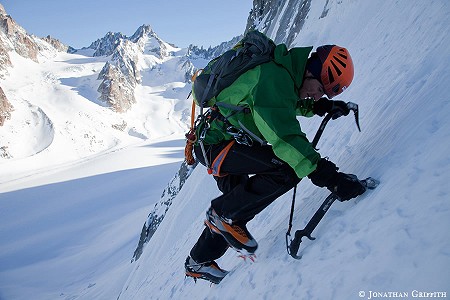
Having spoken to a variety of climbers and shop staff (AKA friends) the consensus is that Phantom Guides have been successfully fitted to a wide variety of crampons including: Petzl Dart, Grivel G20, Black Diamond Cyborg, and the DMM Terminator Crampons (I have mentioned this last so that it doesn't look like a cheap plug). For those looking primarily at mountaineering the Grivel G12 Cramp-o-Matic, Black Diamond Sabertooth Pro, and Petzl Vasak are also compatible.
Summary
If you're looking to invest in a pair of winter boots that will be:
a) Comfortable
b) Warm
c) Light
d) Suitable for a wide range of activities
e) Worn by Ueli Steck
Then look no further...
If they're good enough for him, the chances are they're good enough for the rest of us.
Scarpa Phantom Guides
|
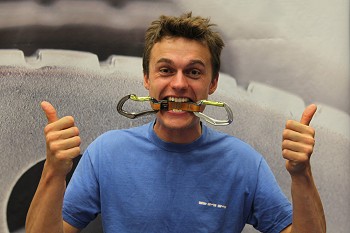
About Rob Greenwood
'Crazy' Rob Greenwood is a rep for DMM and is based out of North Wales. He is a keen summer and winter climber, a huge sea cliff fan and a generally nice bloke. He also runs those super long ultra-endurance races and is consequently very fit. Which is great for him, but not so nice for Jack 'desk jockey' Geldard when he is trying to keep up on long snow slopes...


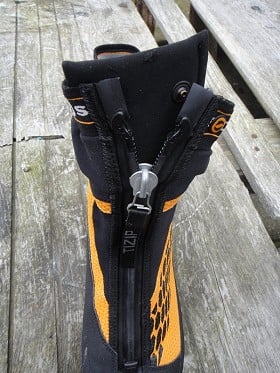
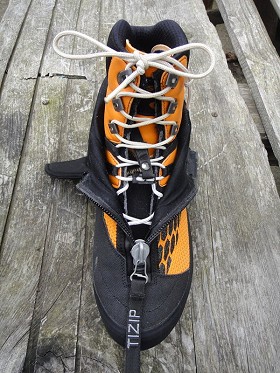


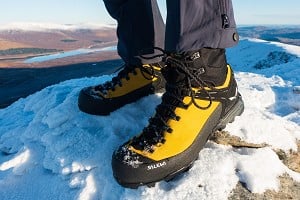
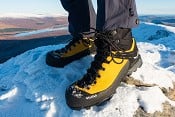
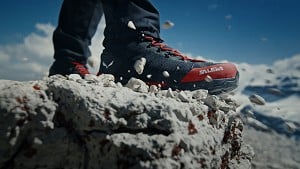

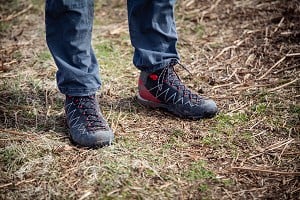

Comments